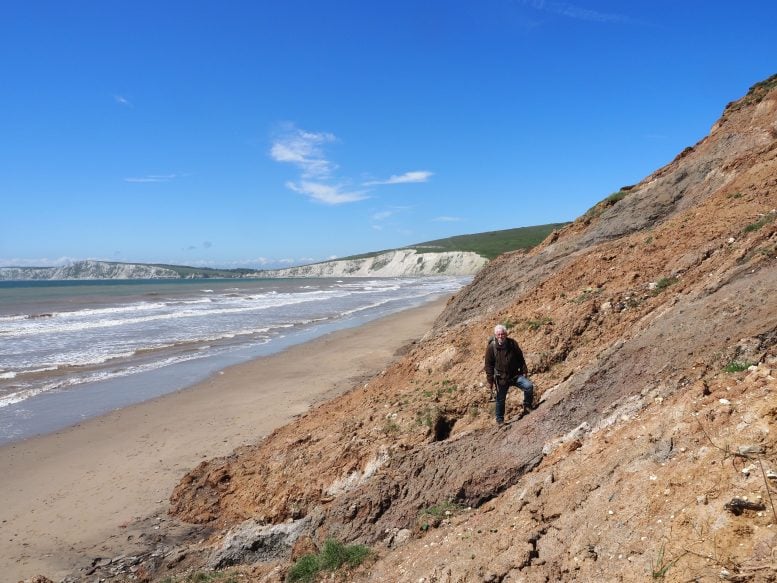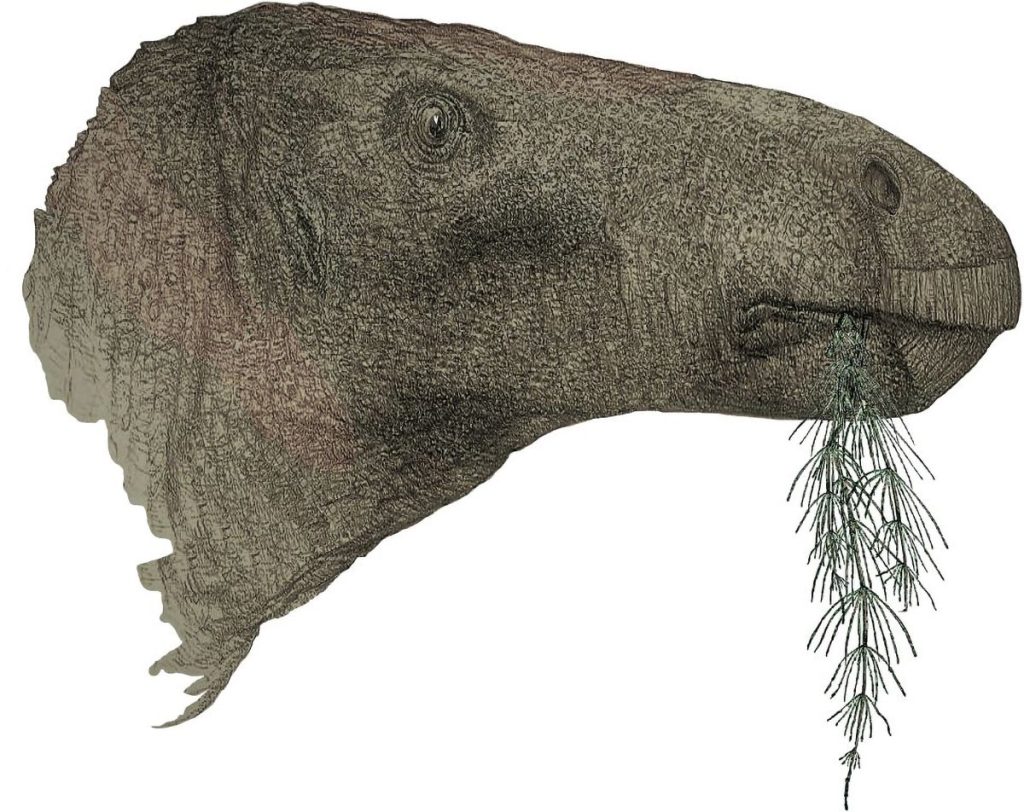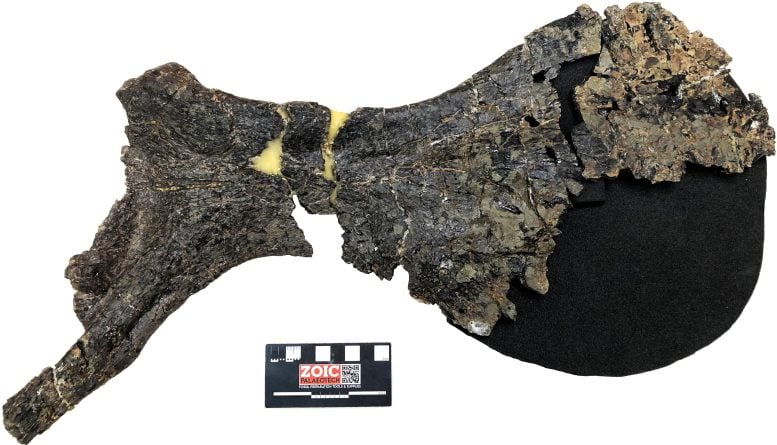New Dinosaurs seedThe discovery of Comptonatus chaseii on the Isle of Wight represents a major advance in understanding. CretaceousA new study into the diversity of early dinosaurs in England is underway, with research suggesting further significant discoveries are likely.
A new paper describes the most complete dinosaur found in the country in the past century. The specimen, which is about 125 million years old and has a pubic bone the size of a dinner plate, was discovered on the cliffs of Compton Bay on the Isle of Wight in 2013. The discovery was made by fossil collector Nick Chase before his tragic death from cancer.
Jeremy Lockwood is a retired general practitioner. University of Portsmouth As a PhD student, Jeremy helped excavate the dinosaur and spent years analyzing the 149 bones that made up the skeleton. Jeremy determined that the skeleton represented a new genus and species. Comptonatus chasei Respect to Nick.
Jeremy said: “Nick had an extraordinary nose for finding dinosaur bones – he was a modern-day Mary Anning. He collected fossils every day, in all weather, and donated them to the museum. We are close in age and we had hoped to collect fossils together in our old age, but sadly that didn’t happen. Despite making many fantastic discoveries over the years, including some of the most complete fossils, Iguanodon This is the first skull discovered in the UK to be named after this dinosaur.”
Scientific Insights and Theories
When first discovered, this specimen MantellisaurusBut Jeremy’s work has revealed even more dinosaur diversity – in fact, this is the second new genus described by him.
He said: “We were able to show that what sets this dinosaur apart is the unique features of its skull, teeth and other parts of its body. For example, its lower jaw has a straight bottom edge, whereas most iguanodonts have a downward curve. Also, this dinosaur’s pubic bone is very large – much larger than other similar dinosaurs. It looks like a dinner plate!”

Jeremy Lockwood at the Compton Bay excavation site on the Isle of Wight. Photo courtesy of the University of Portsmouth
Jeremy doesn’t know why the pubic bone at the bottom of the abdomen was so large: “Maybe it was for muscle attachments, a slightly different way of moving, or maybe it was to support the contents of the stomach more effectively, or maybe it had something to do with how the animal breathed, but all of these theories are somewhat speculative.”
Jeremy named the dinosaur. Comptonatus It is named after Compton Bay, where it was discovered, and “tonatus” means “thunder-like” in Latin.
“The animal would have weighed about a tonne, making it about the size of a male American bison. Fossil footprints found nearby indicate that the animal likely lived in herds, so it’s possible that predators surprised them on the floodplains more than 120 million years ago, sending hordes of these heavy dinosaurs on a rampage.”
Research Contributions and Museum Involvement
Dr Susanna Maidment, Senior Research Fellow and Palaeontologist at the Natural History Museum and lead author of the paper completed while supervising Jeremy’s PhD, said: “Comptonatus This is a fantastic dinosaur specimen – one of the most complete to be found in Britain in the last century.
“The recognition of this new species follows extremely detailed study by NHM Assistant Scientific Officer Dr Jeremy Lockwood, whose work continues to reveal that Early Cretaceous dinosaur diversity in southern England was much greater than previously thought.”
“This specimen, Brigstone but, Mantellisaurus (Two species of Iguandontian dinosaurs are Comptonatus) indicates rapid evolution of iguandonian dinosaurs during this period and may help us understand how ecosystems recovered after the putative end-Ezoic extinction event. Jurassic period.”
In the entire 1900s, only four new species of dinosaur were discovered on the Isle of Wight, but in the past five years eight new species have been named.
Jeremy added: “This is a truly remarkable discovery, which helps us understand more about the different types of dinosaur that lived in Britain during the Early Cretaceous period. It adds to recent research showing that Wessex was one of the most diverse ecosystems in the world.”
The dinosaur was added to the collection of the Dinosaur Island Museum in Sandown, Isle of Wight. The paper was recently published in Journal of Systematic Palaeontology.
Dinosaur Island curator Dr Martin Mundt said: “Ongoing research into the museum’s collections continues to reveal exciting new discoveries. Most of Nick’s most significant discoveries remain on the island, creating a lasting legacy. We can look forward to discovering many more new types of prehistoric creatures from the island’s cliffs and in our collections.”
Mike Greenslade, general manager of the National Trust for the Isle of Wight, said: “This incredible discovery at the National Trust’s Compton Bay highlights the Isle of Wight’s rich natural heritage. The discovery of the most complete dinosaur in the UK in a century not only demonstrates the palaeontological importance of the island, but also underlines the importance of preserving our landscape for future generations to explore and learn from. Nick Chase’s incredible discovery and Jeremy Lockwood’s dedicated research are testament to the incredible history waiting to be uncovered here. We are thrilled to be part of this ongoing journey of discovery and scientific advancement.”
Reference: “Comptonatus Chasey, a new iguanodontid dinosaur from the Lower Cretaceous Wessex Formation of the Isle of Wight, southern England” by Jeremy A. F. Lockwood, David M. Martill, and Susannah C. R. Maidment, July 9, 2024, Journal of Systematic Palaeontology.
Translation: 10.1080/14772019.2024.2346573



